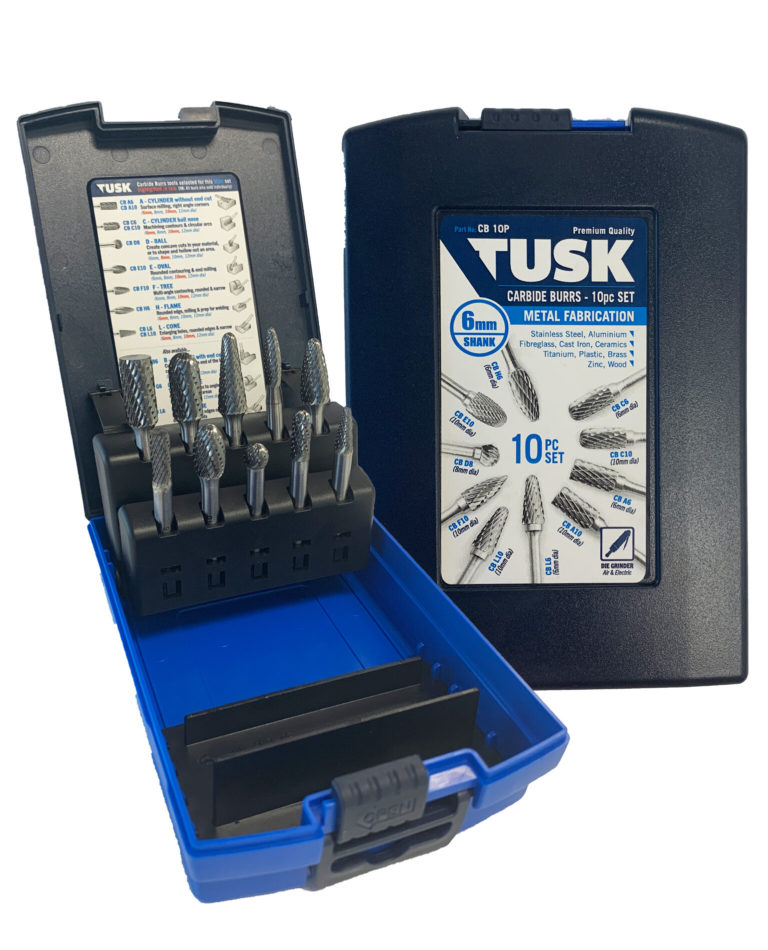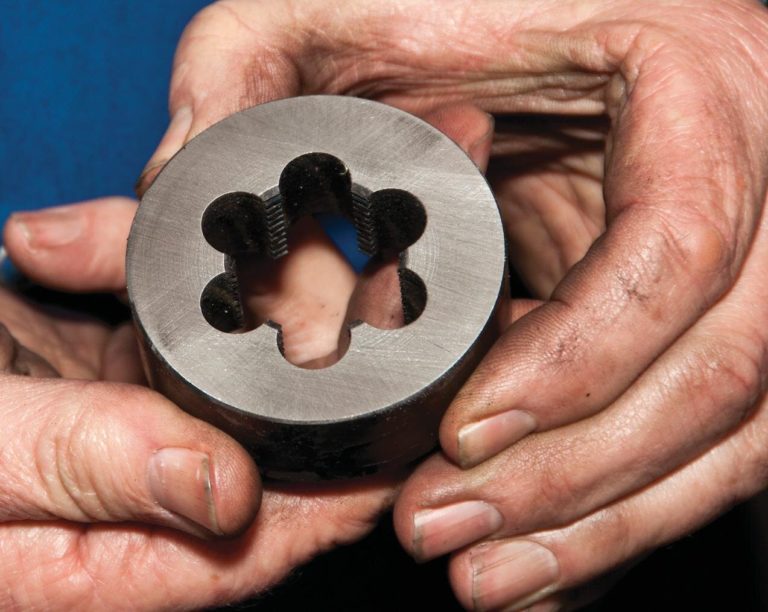By Jude Woodside
When the drill point on my drill press started moving around too much, I called in the expert
My drill press has never been brilliant but I have always believed that it had more run-out than it should. I suspected the bearings in the quill and had planned to replace them for some time. Finally the wavering of the drill point got to me so I called Russell Loudon of Loudon Industries for an expert opinion.
Russell is more at home with fixing and tuning hi-tech mega-dollar processing machines for industry so I was confident that my fairly basic drill press wouldn’t be too much of challenge.
First we checked to make sure that the there was in fact some play in the quill and indeed the dial gauge showed run-out of over 0.5 mm, quite a significant amount of wobble. I felt vindicated and quietly pleased that I hadn’t dragged Russell away from oiling and balancing the wheels of industry on false pretences.
Measuring the run-out at the chuck
Removing the return spring housing
This drill press was suffering from excessive and visible run-out. Russell checked the amount of run-out with a dial gauge and found more than 0.5 mm. This could be due to the bearings being fitted incorrectly or through damage.
The first thing to check for is excessive play or backlash in the shaft. Do this by disconnecting the belts and simply rotating the drive pulley back and forth by hand. Do it over the length of the quill travel. This will detect any damage in the splines that engage the drive pulley. In this case there was no play in the shaft.
Now extract the quill. First the return spring is disconnected and with it the nut holding the feed mechanism. This causes the quill assembly to drop to its lowest point.
The chuck can then be removed with a tapered drift. Removing the feed mechanism shaft disengages the rack and pinion that controls the rise and fall and allows the quill to drop out the bottom. The quill itself consists of a tube holding two bearings through which a shaft runs. The rack is machined into one side of the quill that connects with the pinion of the feed mechanism. One end of the shaft running through the quill is splined to engage with the driving pulley and the other end is a tapered tube to accept the morse taper chuck fitting.
Removing the retaining clip on the fluted end of the quill and the circlip allows access to the holding nut which holds tension on the bearings. My drill press has 6-series bearings which are deep-groove bearings used with a preload. The preload tension takes out the fl oat in the bearings and causes them to run radially true (concentric), making them ideal for this purpose. In this instance, the bearings had simply not been correctly tensioned.
Removing the chuck with a tapered drift
The quill is removed with the feed mechanism
Undoing the bearing nut
BEARINGS
First, though, we removed the shaft from the quill by striking it against a soft wood surface. This allowed us to inspect the bearings themselves for pitting or wear that might have contributed to the run-out. New bearings are commonly available. In the absence of any pitting or damage to the bearings it was a simple process to replace the shaft and tension the bearings with the holding nut. It is wise to leave a little play (0.2 mm or .007 inches) in the bearings. This is best achieved by tightening the bearing with the locking nut and then backing off the tension fractionally.
The additional play is to allow the bearing to expand with heat. Not allowing for some movement would inevitably cause the assembly to seize. Secure the locking tab and the circlips to the quill and refit the quill to the drill press. As you replace the quill, engage the rack and pinion. Wind the quill up and wind on about one turn of tension into the spring to allow for sufficient tension to cause the return spring to return the quill to the top of its travel upon release. Tighten the grub screw of the spring holder so the spring holds the quill at the top of its stroke.
Removing the quill shaft
Tightening the bearing nut to pre-tension the bearings
We retested the now-tightened assembly minus the chuck and found the requisite 0.2 mm run-out. However, with the chuck replaced the run-out, measured with a length of silver steel in the jaws, was better than previously but still worse than without the chuck. That could mean only one of two things – either there was dirt in the taper housing or the chuck jaws themselves were. worn. Drills that spin in the chuck cause the chuck jaws to wear unevenly and this can cause a slight eccentricity sufficient to cause excessive run-out. They can be repaired but it usually more cost-effective to simply replace them. In this case it was the chuck.
Retesting the run-out



